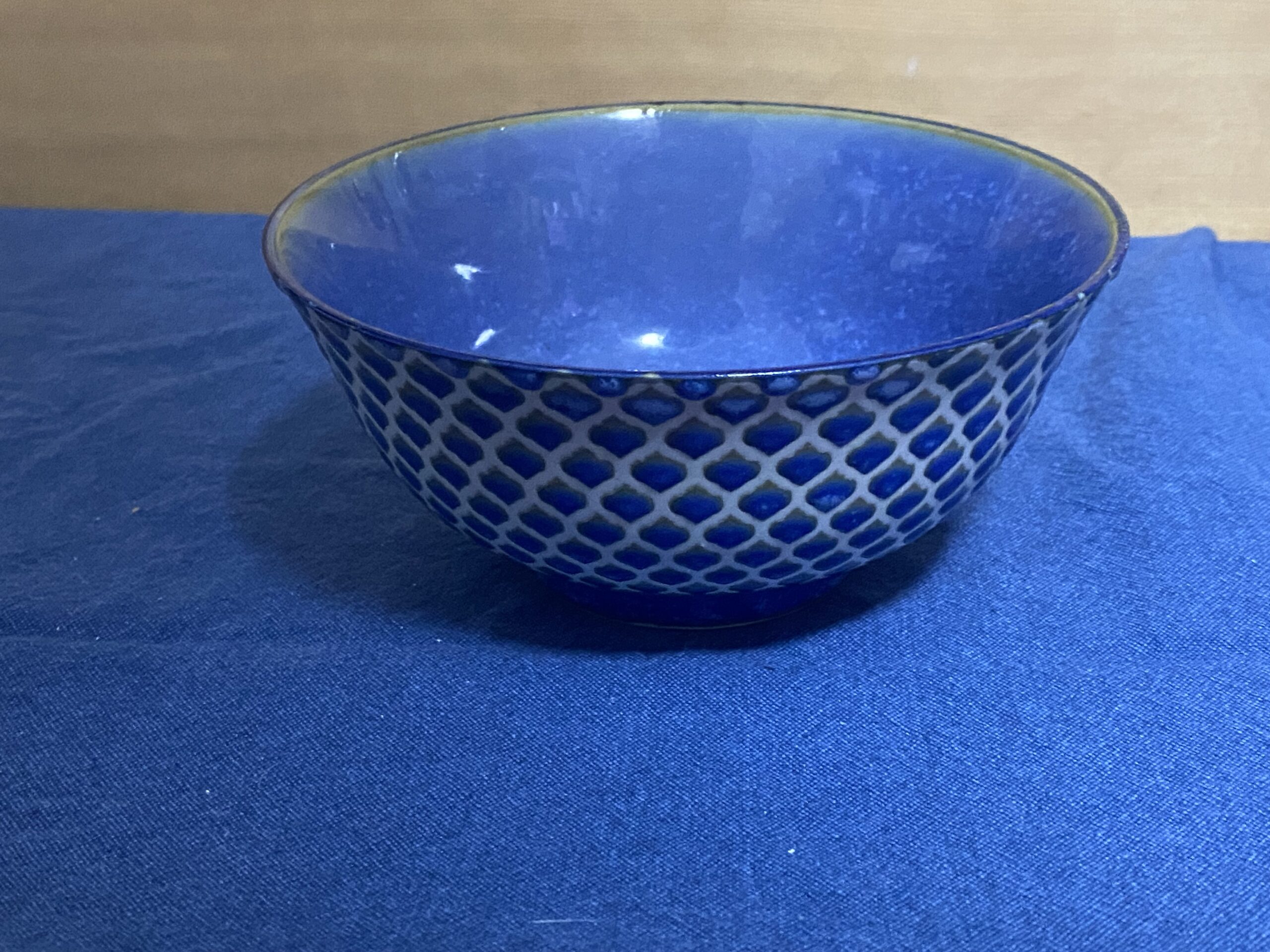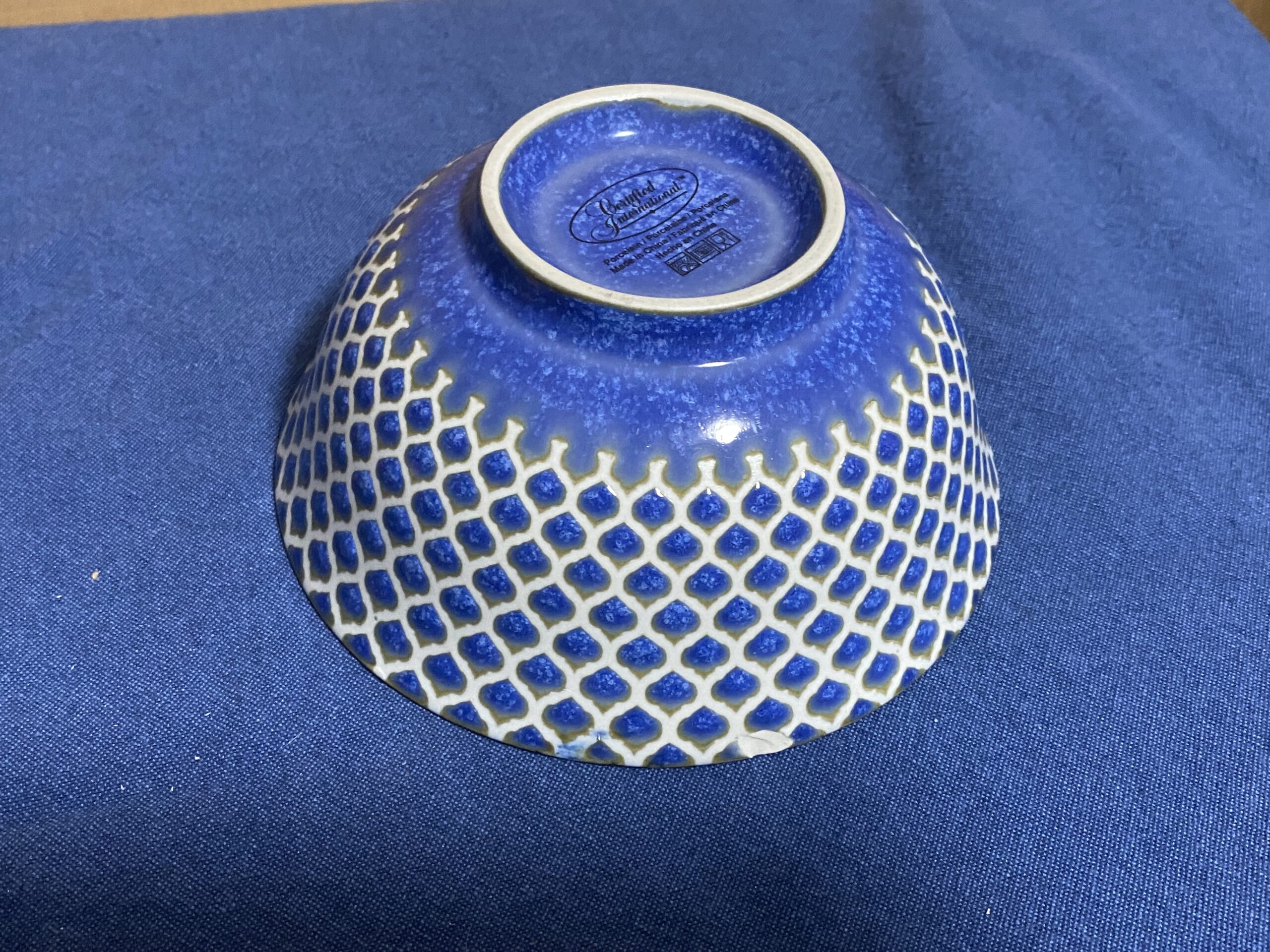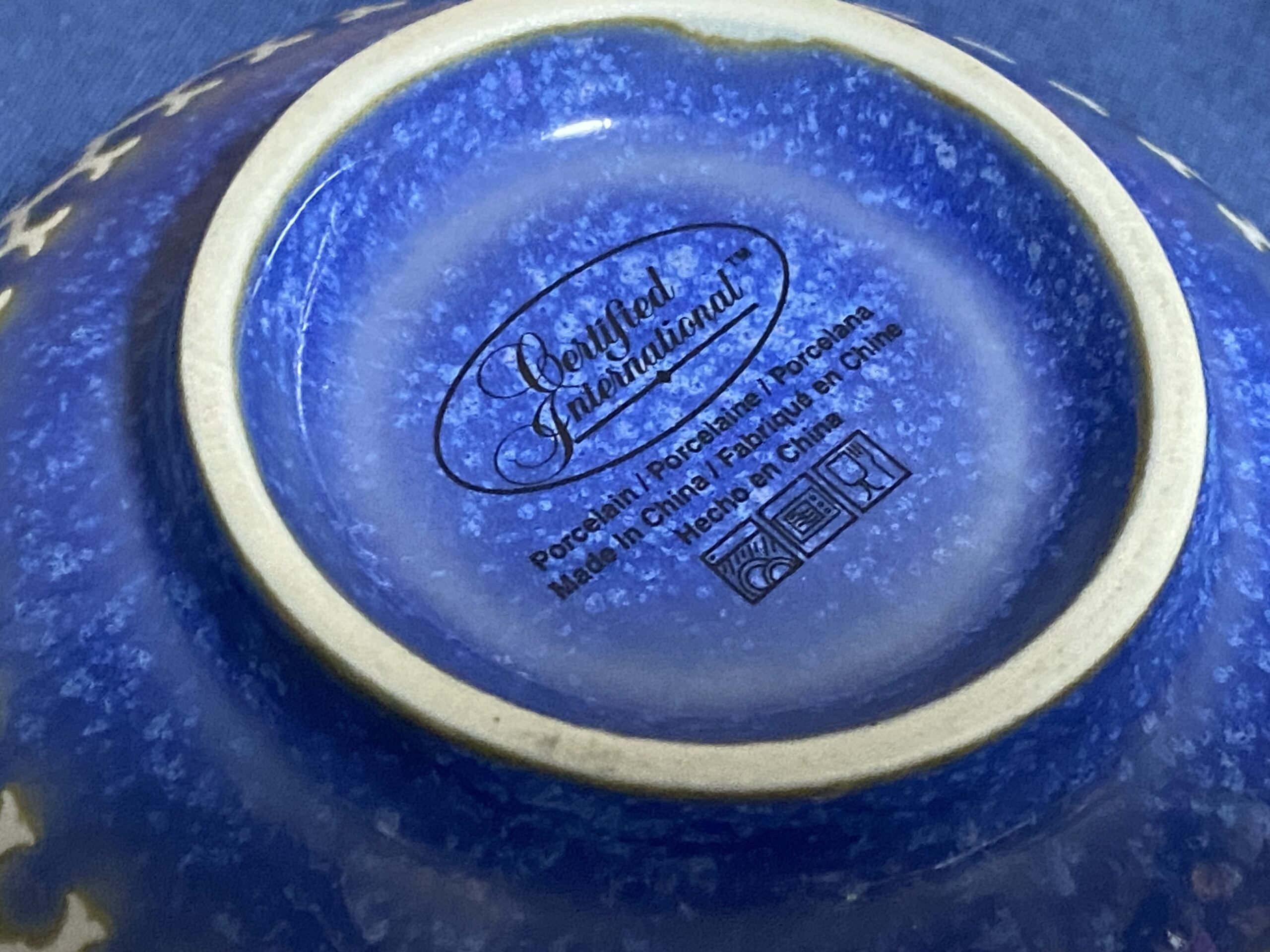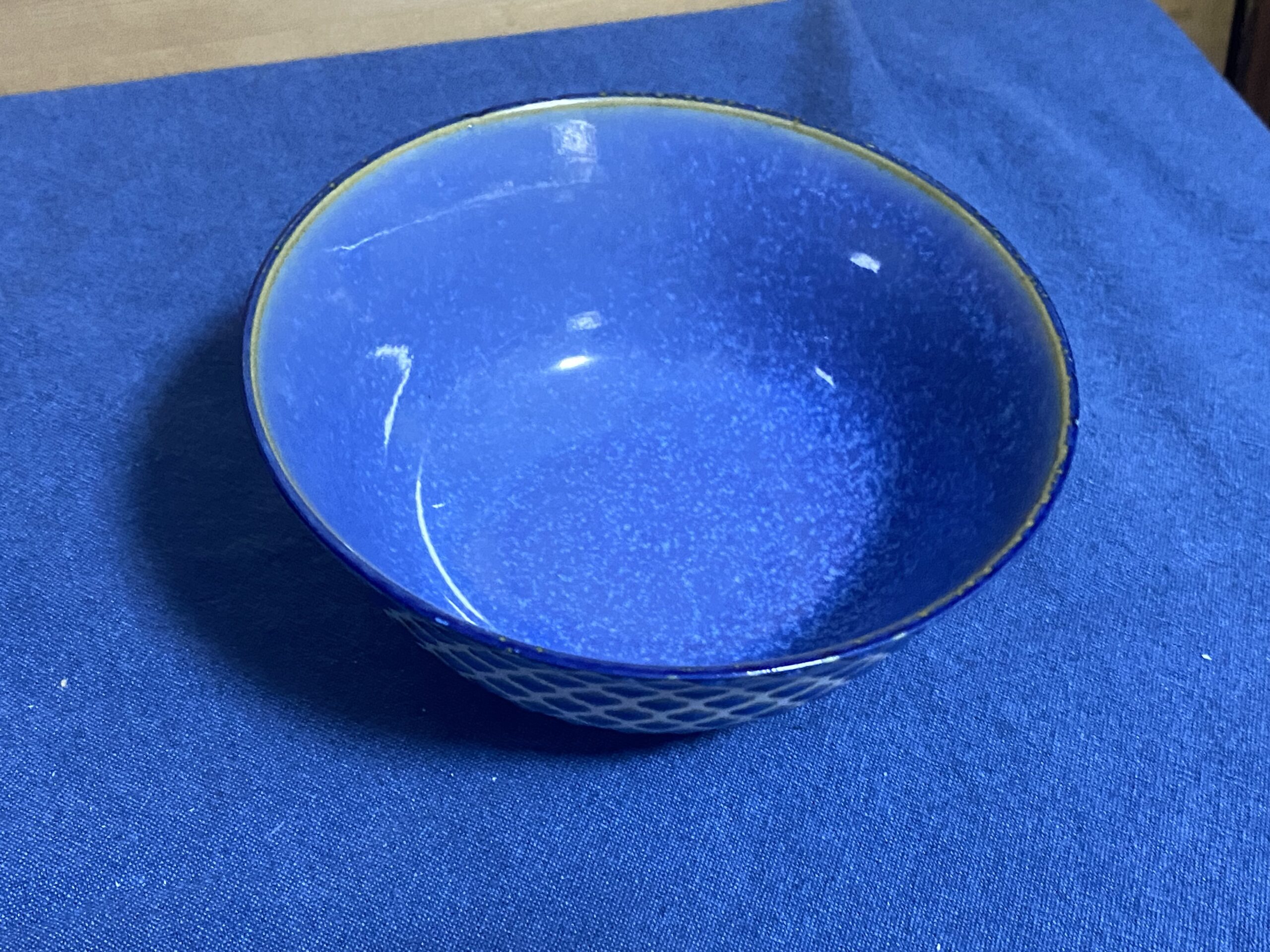XRF Test Results for Certified International Blue Glazed Ceramic Bowl (purchased at Costco c. 2017 or Later), Made in China
This is an ad-free article.
We are publishing this article as ad-free to make it easier for you to read. If you would like to support our independent consumer goods testing by contributing (which will also help us keep our more widely-read articles ad-free!), click here. Thank you!
For those new to the Lead Safe Mama website:
Tamara Rubin is a multiple-federal-award-winning independent advocate for childhood Lead poisoning prevention and consumer goods safety, and a documentary filmmaker. She is also a mother of Lead-poisoned children (two of her sons were acutely Lead-poisoned in 2005).
- Tamara owns and runs Lead Safe Mama, LLC — a community collaborative woman-owned small business for childhood Lead poisoning prevention and consumer goods safety.
- Since 2009, Tamara has been using XRF technology (a scientific testing method) using the exact instrumentation employed by the U.S. Consumer Product Safety Commission to test consumer goods for toxicants (specifically heavy metals — including Lead, Cadmium, Mercury, Antimony, and Arsenic).
- Since July of 2022, the work of Lead Safe Mama, LLC has been responsible for 5 product recalls (FDA and CPSC).
- All test results reported on this website are science-based, accurate, and replicable.
- Items that Lead Safe Mama, LLC reports on are tested multiple times to confirm the results published (for each component tested).
- Tamara’s work was featured in Consumer Reports Magazine in February 2023 (March 2023 print edition) and The Guardian in November 2023.
Published: December 26, 2023
Tuesday
As background for each of these articles, I wanted to readers to have the the following context:
- All U.S. federal agencies agree that there is no safe level of Lead exposure for human beings.
- There is currently no federal regulatory limit for total Lead content in most consumer goods — UNLESS they are items explicitly “intended for use by children.”
- Officially, dishware and kitchenware are not considered to be “items intended for use by children” (!) — consequently, there is currently no regulatory limit for total Lead content, as detectable by an XRF instrument, in these items. (!)
- LEAD: for context, according to U.S. federal regulations, any item made specifically “for use by children” must not test positive for Lead at levels above 90 ppm Lead in the paint, glaze, or coating and also must not test positive for Lead at levels above 100 ppm Lead in the substrate (base material).
- The instrumentation Lead Safe Mama, LLC uses is the same instrumentation used by the United States Consumer Product Safety Commission to screen consumer goods for toxicants (including Lead, Cadmium, Mercury, Antimony, Arsenic, etc.)
- There is no current U.S. federal regulation specifying any total Cadmium-content limit for most consumer goods.
- CADMIUM: The two current strictest regulatory standards for Cadmium content are the State of Washington’s regulatory limit (40 ppm, total content), and the Country of Demark’s total limit (75 ppm total content).
- Any item that tests below 90 ppm Lead in all components is considered (by Lead Safe Mama, LLC) “safe by all standards.”
- Any item that tests below 40 ppm Cadmium in all components is considered (by Lead Safe Mama, LLC) “safe by all standards.”
- We present this information to you (Lead Safe Mama readership, and our greater community) so you can make informed decisions about using products you already own or may be evaluating for purchase.
- For greater context about the “WHY” behind what we do here, click here.
- To learn more about sending an item in to Lead Safe Mama, LLC for testing (as part of the collaborative work we do with our community), click here.
- To read more about the testing methodology Lead Safe Mama, LLC uses, click here.
- To read more about Lead Safe Mama, LLC’s business model, click here.
- To make a contribution in support of the work of Lead Safe Mama, LLC (or to support our work in other ways), click here.
Some additional reading that may be of interest:
XRF Test Results for the Costco Blue Glazed Bowl (c. 2017 or later) Pictured
Reading #1) Blue glazed food surface of the bowl
- Lead (Pb): non-detect
- Cadmium (Cd): non-detect
- Mercury (Hg): non-detect
- Arsenic (As): non-detect
- Antimony (Sb): non-detect
- Titanium (Ti): 20,200 +/- 3,500 ppm
- Iron (Fe): 962 +/- 261 ppm
- Cobalt (Co): 2,597 +/- 298 ppm
- Zinc (Zn): 37,000 ppm +/- 1,500 ppm
Reading #2) Black printed logo mark on the bottom of the bowl
- Lead (Pb): 2,268 +/- 226 ppm*
- Cadmium (Cd): non-detect
- Mercury (Hg): non-detect
- Arsenic (As): non-detect
- Antimony (Sb): non-detect
- Titanium (Ti): 12,100 +/- 4,900 ppm
- Iron (Fe): 1,387 +/- 425 ppm
- Cobalt (Co): 3,454 +/- 489 ppm
- Zinc (Zn): 35,700 ppm +/- 2,200 ppm
*It is quite common to find printed logo marks on the bottoms of dishes that test positive for high levels of Lead (even when the food surface of the dish is free of Lead and other toxicants).
Specific Considerations Related to This Bowl
- While it is unlikely for the Lead on the bottom of a dish like this to contaminate your kitchen environment and your food, it is not impossible, given these logo markings often wear over time. You can read more about that here.
- Separately, the fact that one can easily purchase dishes (relatively inexpensively) WITHOUT a Lead-painted logo marking makes it a reasonable choice to do. To see examples of 100% Lead-free dishes, click here.
- The food surface of this dish is “safe by all standards” — so is this dish likely to poison me? Read more about some relevant considerations here, and here.
Given the level of Lead in this particular back mark (2,268 ppm vs. the 90 ppm safety level in items intended for use by children) is so significant (even though it is not on the food surface of the dish), I would personally avoid using these dishes. Although, I respect that others may make a different choice after weighing all of the considerations.
An additional key point to highlight:
- If this dish were an item made for use by children and was manufactured after 2008, it would be considered illegal — EVEN THOUGH it is only the back mark/ log mark of the dish that is positive for an unsafe level of Lead (across the board, dishes are not considered to be “items intended for use by children” and are not regulated with the same standards in mind as “items intended for use by children”).
I used to own dishes with a similar set of considerations and chose to get rid of them — you can see those here, at this link.
Tamara Elise Rubin
Owner — Lead Safe Mama, LLC
~ End ~
Never Miss an Important Article Again!
Join our Email List













Have you by any chance tested the logos on the bottom of the corelle dishes?
Thanks,
Lidia
I own these dishes… Yikes.